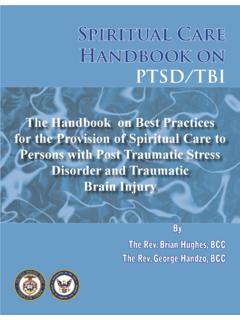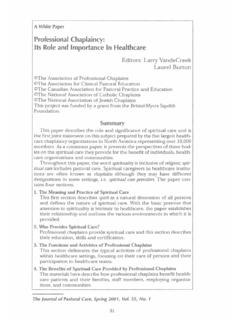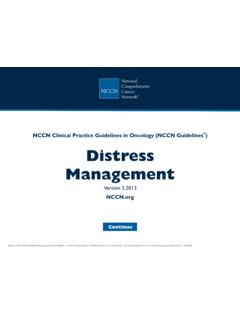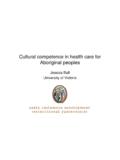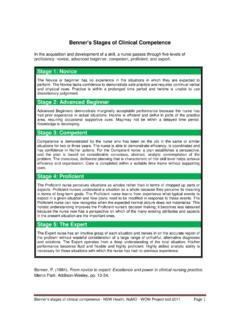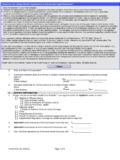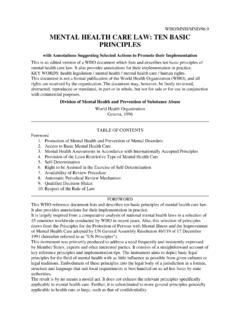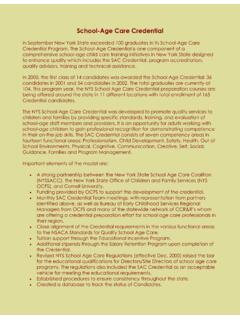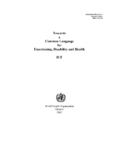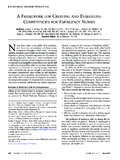Transcription of and Cultural Values for Health Care Professionals
1 HealthCare Chaplaincy 2013 1 handbook of patients spiritual and Cultural Values for Health care Professionals Updated March 2013 HealthCare Chaplaincy 2013 2 Table of Contents A Note 5 Introduction 6 Religions Western Religions Comparison of Jewish, Christian and Muslim Traditions 7 Christianity 8 Christian Science 8 Eastern Orthodox 9 Jehovah s Witness 10 Mormonism 11 Protestantism 12 Roman Catholicism 13 Seventh-day Adventism 15 Islam (Muslim) 16 Sunni vs.
2 Shiite Judaism 19 Eastern Religions Buddhism 22 Hinduism 23 Sikhism 25 Other Religions Bah ' 27 HealthCare Chaplaincy 2013 3 Hawaiian Spirituality 28 Native American 30 Rastafarian Movement 31 Santeria 32 Voodoo 32 Wicca 33 Cultures Major American Cultures African-American/ Black Culture 34 Hispanic-American Culture 35 Native American Culture 37 Native Hawaiian Culture 40 African Cultures Ghanaian Culture 44 Kenyan Culture 46 South African Culture 48 Caribbean Cultures Cuban Culture 50 Haitian Culture 52 Jamaican Culture 54 Middle Eastern/North African Cultures Arab Culture 57 Egyptian Culture 59
3 Iranian Culture 61 HealthCare Chaplaincy 2013 4 Libyan Culture 63 East Indian Cultures 66 East Asian Cultures Chinese Culture 69 Filipino Culture 71 Japanese Culture 74 Korean Culture 76 Vietnamese Culture 78 Indonesian Culture 80 Tibetan Culture 82 Euro-Asian Cultures Gypsy / Roma Culture 84 Russian Culture 87 HealthCare Chaplaincy 2013 5 Notes for the Reader 1.
4 This handbook is a guide that is meant to describe beliefs and practices generally found within a particular Cultural or religious group. As often as possible, we have verified the content with people who self-identify with that particular group. That process is ongoing. We have consulted, printed, and referred to online sources considered the most authoritative in this content area. However, we understand, as should the reader, that not everyone who identifies with a particular Cultural or religious group will adhere to the beliefs or Values as presented. 2. This handbook is not complete and it will likely never be.
5 Thus, the reader will see that much information is still missing because we have not found sources on a given topic that we consider authoritative. We periodically post new versions of the handbook as we accumulate new information. As this handbook is a work in progress, we welcome feedback and contributions via email to the Rev. George Handzo, BCC at 3. These materials are authorized for use per the license agreement below: Cultural & spiritual Sensitivity A Learning Module for Health care Professionals and Dictionary of patients ' spiritual & Cultural Values for Health care Professionals were developed by the Chaplaincy care Leadership and Practice Group of HealthCare Chaplaincy, New York, NY.
6 (Revision and update of earlier work by the Rev. Susan Wintz, BCC and the Rev. Earl Cooper, BCC) These materials are intended for educational and non-profit purposes which are consistent with the mission and Values of HealthCare Chaplaincy and the Association of Professional Chaplains, and are for use only in their entirety unless written permission is obtained from the developers and HealthCare Chaplaincy. 4. When using these materials we request that this credit be included: This content is used with the permission of HealthCare Chaplaincy in New York, the leading multifaith organization for the integration of spiritual care within Health care and palliative care through research, professional education and clinical practice.
7 Learn more at HealthCare Chaplaincy 2013 6 Introduction Why do we need to be culturally and spiritually sensitive? The Joint Commission (JC) holds hospitals accountable for addressing and maintaining patient rights. Founded in 1951, the Joint Commission looks out to improve the healthcare providence of the general public. The Joint Commission is the oldest standard-setting and accrediting body in Health care . The commission is headed and governed by a 32 member board. These rights include the accommodation of Cultural , religious, spiritual , and personal Values as well as to religious and other spiritual practices.
8 Health care Professionals are entrusted to care for patients as whole persons - body, mind and spirit. The Health care approach is interdisciplinary and encompassing. It is important then, for that approach to be culturally and spiritually sensitive. In addition, Health care Professionals need to be empowered with the capacity, skills, and knowledge to respond to the unique needs of each patient and their loved ones. Applicants seeking who seek accreditation by the commission need to have high expertise in administrative affairs, clinical practice, Cultural competence, language access, pastoral access, patient advocacy, patient safety, patient-provider communication, Health care policy, research and risk management.
9 The Joint Commission s Roadmap for Hospitals: Advancing Effective Communication, Cultural Competence, and Patient- and Family-Centered care promotes communication and Cultural competence. This monograph provides methods for hospitals to improve their efforts to ensure that all patients are receiving the same high quality healthcare. The Roadmap for Hospitals does not detail the process for how to become fully competent and patient/family centered. However, the Joint Commission urges hospitals to adopt a combination of methods as a means of setting a foundation for creating the process, policies and programs that best suit their organization.
10 The Roadmap for Hospitals addresses topics like language access, Cultural competency, Health literacy and communication barriers and mobility needs. The Roadmap for Hospitals is structured so that the beginning chapters mirror the continuum of care including Chapter 1: Admission, Chapter 2: Assessment, Chapter 3: Treatment, Chapter 4: End of Life care , and Chapter 5: Discharge and Transfer. Chapter 6 addresses Organization Readiness. The Roadmap for Hospitals can be utilized in various ways to improve the quality and level of patient and family centered care . It can be used to improve performance, train staff, help inform policy and evaluate compliance with relevant laws, regulations and standards.

